Your best garden pots ever – 6 tips for brilliant container gardening
What’s the secret of stunning garden pots?
Expensive containers? Choosing the right plants? Having an artistic eye for arrangement?
Maybe. But we’ve all seen wonderful displays of common plants in quite ordinary pots, so it’s certainly not the full story.
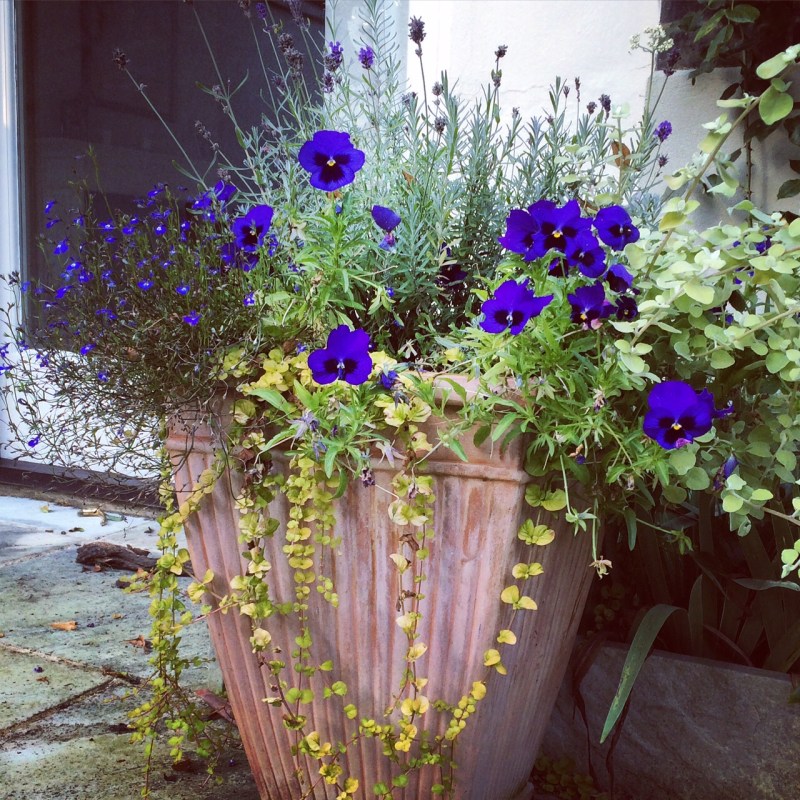
This beautifully planted pot follows the ‘Thriller, Filler, Spiller’ container planting technique. The thriller is purple pansies, the filler is French lavender and the spiller is a trailing ivy.
After experiencing many disappointments in my own pots, I have quizzed experts to come up with these tips:
1) Feed and water your plants
This advice usually comes at the end of any advice on creating wonderful container planting displays. So it went into the ‘small print’ section of my brain. ‘At the end’ equates to ‘not important’.
That’s why I’m putting it at the beginning of this post. I think it’s probably the biggest single difference between a ho-hum collection of planted pots and a stunning display of container plants. Feel free to disagree with me.
This is a collaborative post with Baby Bio Outdoor liquid feed, who have sponsored it. I have drawn on their expertise, as well as my own and other people’s experience.
What you need to know about watering:
Potted plants don’t pick up rain water properly.
That’s because as plants grow and develop in pots, their growth spreads, explain the Baby Bio Outdoor experts. That usually prevents rain water from falling in any significant proportion to be useful to the plant.
So pots need regular watering, especially during the main growing season. About twice a week on average.
Bear in mind that larger pots will probably require less water as they will not dry out as quickly as smaller ones. Very small pots may need almost daily watering.
Fill the pot up to the rim so that all the soil is covered, say the Royal Horticultural Society (RHS). Let it drain through completely, then repeat.
What you need to know about feeding
Plants in pots can only take up nutrients available to them in the soil that’s actually in the pot.
Without the addition of plant food provided with weekly or fortnightly treatments, these nutrients will run out within weeks.
Use either a liquid fertiliser – such as Baby Bio Outdoor – every two weeks, or a slow-release granular fertiliser like Toprose at the start of the season to make sure that your plants have the nutrients they need to maintain healthy growth
Note: There are some Amazon affiliate links in this post which means you can click through to buy. If you do, I may receive a small fee, but it won’t affect the price you pay.
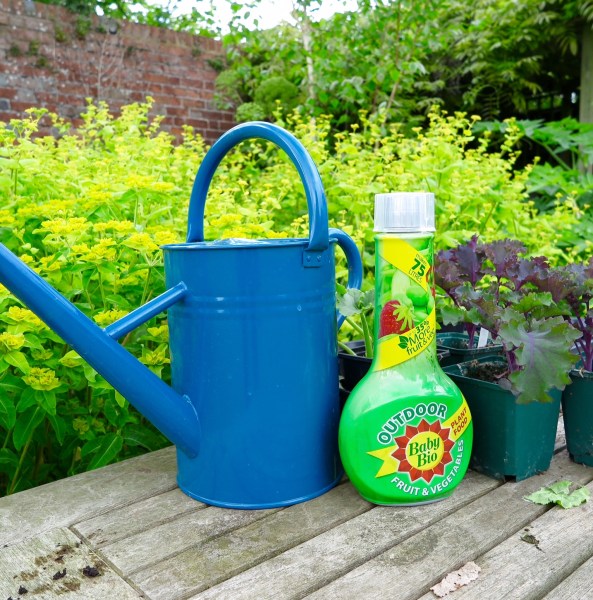
There’s a growing (excuse my pun) interest in vegetables in pots – and veg really are hungry plants. Feed them with a specialist fruit & vegetable feed such as Baby Bio Outdoor Fruit & Vegetables.
But don’t overfeed – mark feeding days in your diary, especially if you’re feeding lots of different plants at different times.
With a soluble plant food, ensure you follow instructions in relation to the amount of plant food and volumes of water required
Take care that the pot is thoroughly and regularly fed and watered. Regular feeding is required throughout the main growing season whatever the pot size, to benefit all plants.
Ericaceous plants such as rhododendrons, camellias and azaleas require an ericaceous plant food to provide them with all their required nutrients.
2) Don’t use garden soil in pots
Garden soil in a pot probably won’t have the right balance of nutrients and it will have weed seeds. If your pots are to have a fighting chance, they need commercial multi-purpose potting compost.
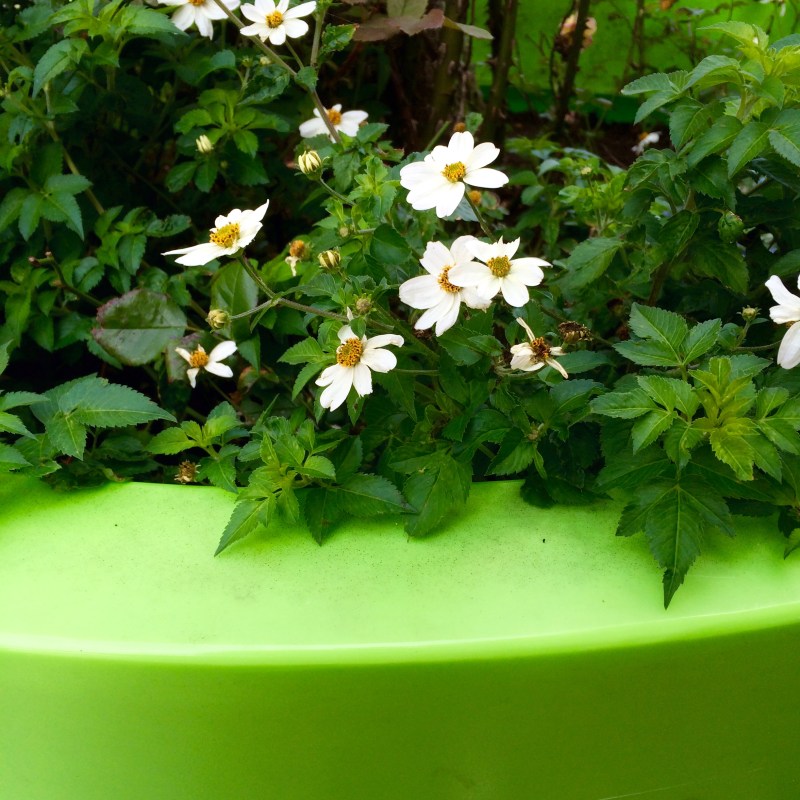
Don’t forget that coloured pots can be very effective. I spotted this lovely combination of bright green pots and simple daisy planting in a street in Calais.
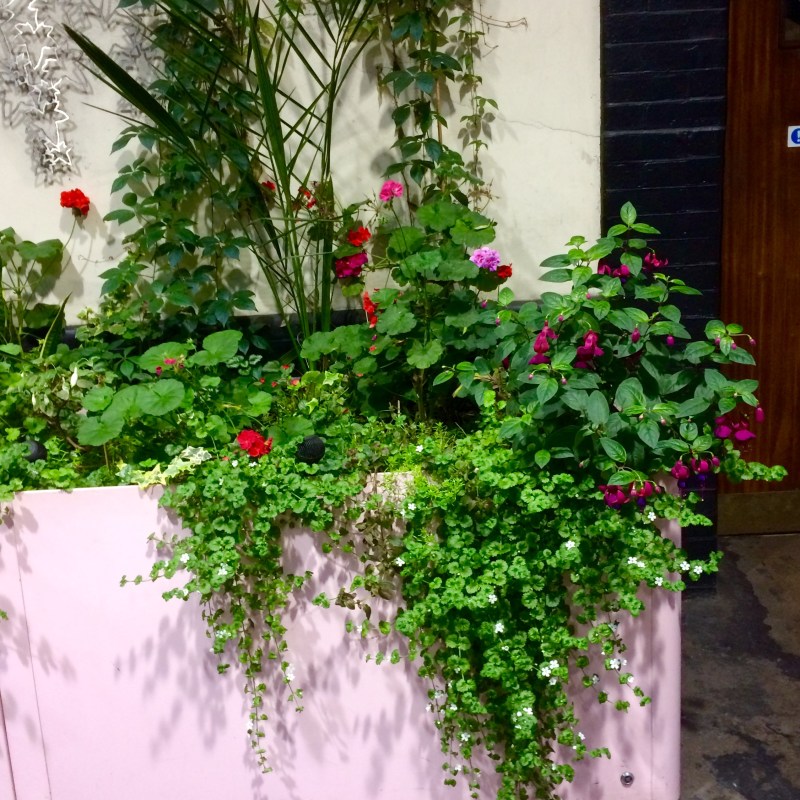
And this very effective pale pink planter with red and pink flowers, plus lots of green, at Edgware Road tube station in London!
3) Change the compost when you change the planting
When I wrote this in my previous post on 25 inspirational ideas for pots, there were howls of anguish from people who have very large planters and pots.
It really isn’t affordable to re-fill large planting pots with five or six bags of commercial multi-purpose potting compost every time you change a display. And if the plants’ roots are fairly shallow, they probably aren’t going down to the bottom of the pot anyway.
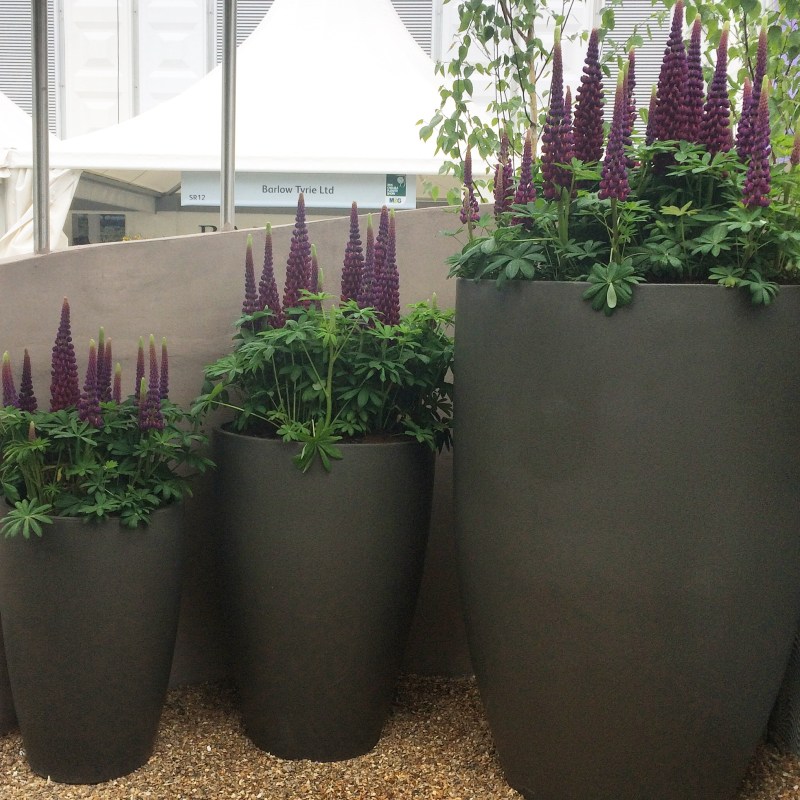
If you change the lupins in these large planting pots from Capital Garden products, you wouldn’t need to change ALL the soil in the larger pots. Using the same plants in different pots is a good style tip – if there’s a plant going cheaply, you can buy a trayful.
Most experts agree that – in large plant containers – it’s fine to scrape away the layer the plants sat in and replenish it.
However if the container plants stop thriving, the compost that’s been sitting in the pot may have picked up viruses or pests so you should change the lot.
What compost to use in pots
The RHS say that you can use a mix of two-thirds garden soil to multi-purpose potting compost in very large pots. But you must also add a general-purpose fertiliser.
Baby Bio Outdoor or Phostrogen Patio Plant Food would both be ideal. Baby Bio Outdoor is a liquid plant food so just add 10ml of the rich liquid to 1 litre of water and apply to the compost once you’ve firmed in your new plants. Phostrogen Patio Plant Food is soluble.
Mix in a watering can according to the instructions on the pack and water it onto the compost, or simply mix a handful with the compost before planting.
In smaller planting pots, it’s better to bite the bullet and buy new compost every time. It’s important to buy peat-free compost, as peat mining really is damaging to the environment.
See here if you want to make your own garden compost.
4) ) Evergreen plants are great for garden pots
I love evergreens, such as bay, box or pine, in pots. They give structure to the garden all year round.
And it’s great to have some pots that don’t need renewing – because changing all your pots once or twice a year can get expensive.
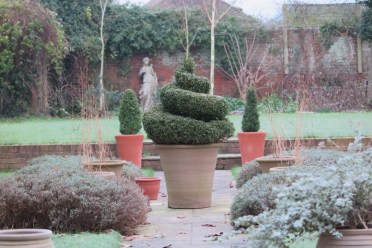
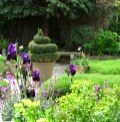
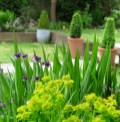
But evergreens in pots do need different care from annual pots. Bellamont Topiary sell yew and box from their fields. They advise you to take evergreens out of their pots every two years, change the potting compost completely and do a hard ‘root trim’. Then replace the plant in the pot (or pot it in a larger one if that’s what you want).
See this post for more ideas on growing evergreens in pots for year-round interest.
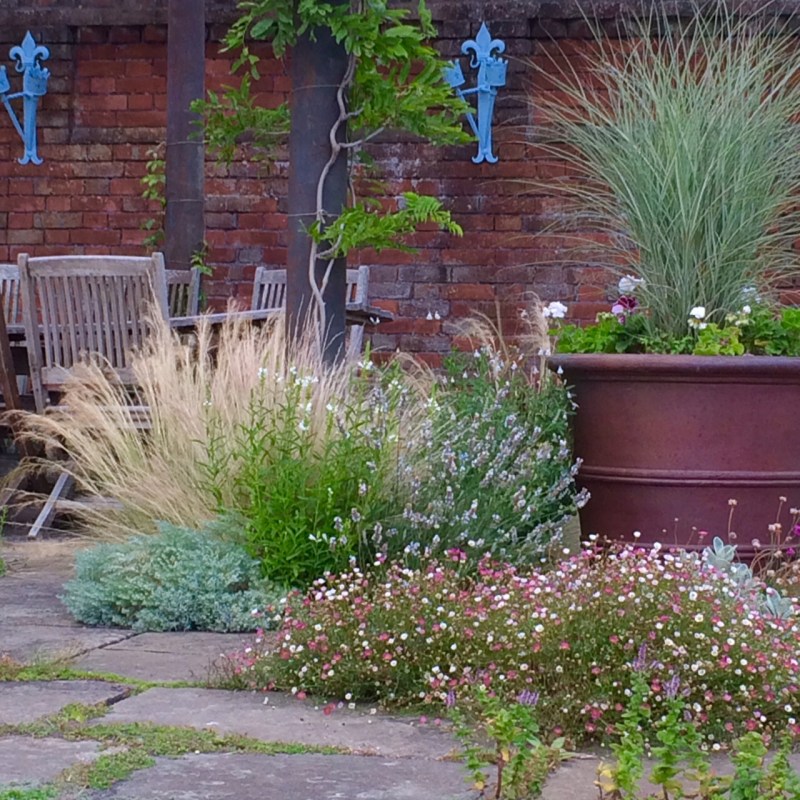
Grasses, like evergreens, can provide planting that lasts for a couple of years in pots: these giant pots at Doddington Place Gardens are planted with grasses. Grasses make a simple, effective planting. Extra plants are added seasonally around the outside.
If you have a permanent plant (such as an evergreen or a grass) in a pot that doesn’t seem happy, check your feeding and watering routines. Evergreens in pots need a slow-release fertiliser during the summer (April to August).
It’s also important to root prune your evergreens in pots. Every two years, take the plant out of the pot, cut back its roots and replace the compost in the pot.
The most important plant in my garden is a topiary box spiral in a large planting pot. I bought it from a topiary field in Dorset last September (for the full story on buying sensational topiary on a middle-sized budget, see here.)
In my last post about using fertiliser (see here), I noted that my topiary spiral had no new growth, while the other box in pots were sprinkled with bright new leaves.
I added a pick-me-up of liquid Baby Bio Outdoor (Flowers & Shrubs). And it worked – now, three weeks later, there are lots of new pale green shoots emerging.
5) Choose the right size pot
Choose a pot that is a bit larger than the roots of the plant you want to put in it. A small plant in too large a pot may rot because its roots aren’t big enough to dry the compost out enough. It’s called ‘over-potting’.
But too small a pot will stop the plant flourishing.
Big pots retain water better than small planting pots. If you have lots of small pots, group them together. They will protect each other (a bit) from sun and wind, so won’t dry out as quickly. See here for more tips on grouping and displaying plants in pots (it’s called ‘potscaping’).
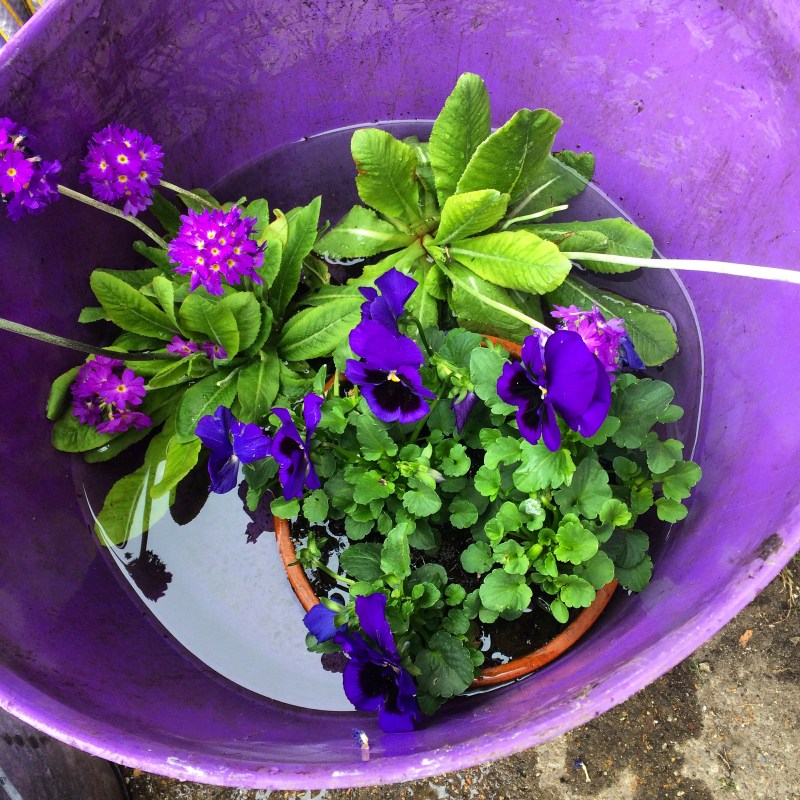
I usually soak small planting pots in a bucket or sink overnight once or twice a week if the weather is hot.
Re-pot in spring. Or even summer. But not in the autumn (unless you’re doing ‘winter interest’ pots, in which case make sure they don’t get water-logged in the bad weather).
Here you can find out why winter pots need to be planted slightly differently from summer pots.
There’s still a debate as to whether pots need crocks at the bottom of them to improve drainage. The RHS say you need crocks. ‘Which’ magazine say that their tests show it makes no difference.
6) Any plant can be put in a pot
If you have leftover seedlings or plants that don’t have a place at the moment, then make them part of your container garden display. One of my most successful pots last year was an Echinacea ‘Southern Belle’.
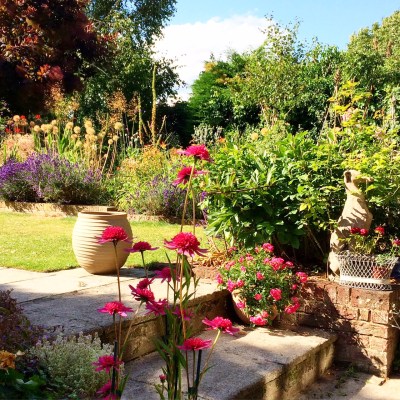
Echinacea ‘Southern Belle’ is the pink flower in the foreground. (It’s in garden pots, but that’s out of the picture).
I’d bought too many plants for the border. The ones I put in garden pots were even more successful than the ones I planted out.
This year I have been inspired by Ian Hodgson’s new book New Wild Garden One of its great ideas is to create a ‘meadow’ in a container. It has a number of ideas for incorporating wildlife-friendly planting into all areas of your garden, including pots.
I long for a little patch of meadow – but I don’t think it would fit into the garden. But I have an old galvanised trough, so I’ll try that out as a mini-meadow.
Click here to buy Baby Bio Outdoor Flowers and Shrub Feed, Concentrate – 750 ml
(it’s an affiliate link so I may receive a small percentage if you buy)
Or here to buy:Baby Bio Outdoor Fruit and Vegetable Feed, Concentrate – 750 ml
More posts on brilliant container planting
There are some fun pot and container ideas in 25 inspiring and practical ideas for container planting. And for easy-care pots, don’t miss this post on the best plants for amazingly low maintenance pots.
Danish influencer and garden expert Claus Dalby creates a complete pot border, with lots of dahlias in pots. There are more tips on how to group pots from Dan Cooper, showing off his spring bulb pot border.
And when it comes to creating beautiful winter pots, here are a few tips you need to know.
If you’d like to take your container garden indoors, then this post on how to decorate with indoor plants has lots of ideas.
Join us for more garden tips, ideas and inspiration…
If you’d like more gardens and gardening in your inbox, the Middlesized Garden uploads a free weekly video and blog post. Find out more here.

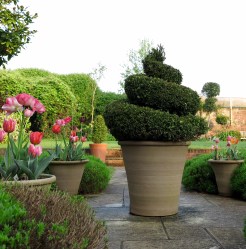
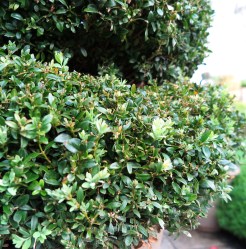























Why have I never thought of it as “thriller, filler, spiller” before, was my reaction when I read this post! Looking outside my backdoor, I definitely need to go and invest in some ‘spiller’ for the summer season! Great post as ever.
Thank you!
Responding to Lynne’s comment, slugs (and ants) can be a problem as they get up through the drainage hole(s) and nibble away happily below ground. I’m one of the “crocks don’t matter” brigade. Rather than worrying about drainage, I worry about the way in. My response to that is to cut a couple of small squares (or circles if you prefer) of close mesh wire and one of landscape fabric. Place one bit of wire mesh over the drainage hole, then the piece of permeable landscape fabric and finally the second piece of wire mesh. The mesh holds the fabric in place and stops it being pressed out of the hole or moved when you shuffle the compost. Excess water can still drain out but the slugs and ants cannot get in.
I have noticed a few ants scurrying around one of my favourite pots – I must take action, thank you for the tips.
my problem is slugs! The crawl up inside the pots and chomp away out of sight
This looks a well maintained and acred garden. Loved the plant with the ice-cream shape. Did you use any trimmer for shaping such a beautiful ice-cream plant ?
I have to confess that we haven’t had to trim the whirly Walnut Whip box spiral since we bought it. I am rather dreading the moment, but luckily it’s just concentrating on recovering from its root trim and is only just beginning to have some new growth.
I made an error in choosing big ceramic bulbous pots. When I came to repot I found I couldn’t knock the plants out because the roots were wider than the neck of the pots. I actually had to destroy a couple of pots because I wanted to keep the plants but they needed a larger pot.
Other people say they’ve had this problem – I presume the best option is only to put annuals in plants with a bulbous shape
My main problem is a concrete area near the house we look out from the kitchen. It goes right up to the fence and we can’t afford to replace it. I want to add some height with climbers or trees but not sure what would grow in pots.
I had a look into this for someone else, and it seems that bamboos can do well in large pots – especially clumping bamboos. A lot of people also grow acers in pots as they prefer ericaceous soil, which most people don’t have
My problem is rabbits, moles and badgers who eat, dig up or otherwise mutilate my potted plants and garden!